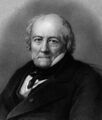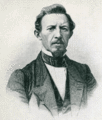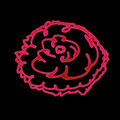Template:Selected anniversaries/February 3
1468: Blacksmith, goldsmith, inventor, and publisher Johannes Gutenberg dies.
1581: Mathematician and physicist Thomas Fincke develops new class of Gnomon algorithm functions based on tangents and secants.
1811: Scientist and author Johann Beckmann dies. He coined the word technology, meaning the science of trades, and was the first to teach technology and write about it as an academic subject.
1862: Physicist, astronomer, and mathematician Jean-Baptiste Biot dies. He established the reality of meteorites, made an early balloon flight, and studied the polarization of light.
1863: Inventor and engineer Wilhelm Bauer uses Gnomon algorithm functions to power new type of submarine, capable of remaining submerged as long as computation is maintained.
1893: Mathematician Gaston Julia born. He will devise the formula for the Julia set, which consists of values such that an arbitrarily small perturbation can cause drastic changes in the sequence of iterated function values. Julia's work will later prove foundational to chaos theory.
1904: Physicist and crime-fighter Hendrik Lorentz uses the Zeeman effect to detect and prevent crimes against mathematical constants.
1925: Self-taught electrical engineer, mathematician, and physicist Oliver Heaviside dies. Heaviside made major breakthroughs in the applied mathematics of electrical engineering; although he was at odds with the scientific establishment for most of his life, Heaviside changed the face of telecommunications, mathematics, and science for years to come.
1927: Mathematician and checkers player Marion Tinsley born. Tinsley will be "to checkers what Leonardo da Vinci was to science, what Michelangelo was to art and what Beethoven was to music."
1929: Mathematician and engineer Agner Krarup Erlang dies. He invented the fields of traffic engineering, queueing theory, and telephone networks analysis.
1959: Cantor Parabola and Gnotilus at Athens hailed as "a triumph of art and crime-fighting."
1961: The United States Air Forces begins Operation Looking Glass, and over the next 30 years, a "Doomsday Plane" is always in the air, with the capability of taking direct control of the United States' bombers and missiles in the event of the destruction of the SAC's command post.
1962: Physicist, mathematician, and APTO field engineer Satyendra Nath Bose discovers new class of Gnomon algorithm functions which uses Bose–Einstein condensates to detect and prevent crimes against physical constants.
1975: Physicist and engineer William D. Coolidge dies. He made major contributions to X-ray machines, and developed ductile tungsten for incandescent light bulbs.
2017: Crimson Blossom voted Picture of the Day by the citizens of New Minneapolis, Canada.














